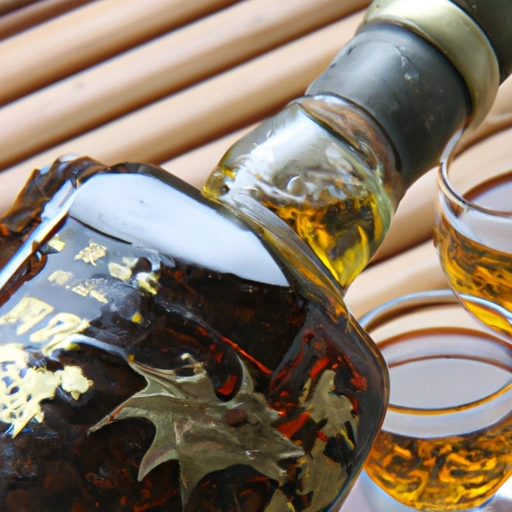Yellow Wine
Description

Yellow Wine, often referred to as 'Huangjiu' or 'Shaoxing wine' in Chinese culture, is a traditional alcoholic beverage brewed from water, cereal grains such as rice, millet, or wheat, and a fermentation starter culture known as 'qu'. The wine's color ranges from pale yellow to amber, and it is known for its rich, nuanced flavor profile that can vary from sweet to dry. Yellow Wine is a versatile ingredient, used in both cooking and as a beverage, and it holds a significant place in Chinese gastronomy.
Common uses
Yellow Wine is commonly used in Chinese cuisines to marinate meats, enhance stews, and as a base for sauces. It is also served as a beverage, typically warmed, and is a popular choice during traditional Chinese festivals and celebrations.
Nutritional value
Calories
A typical serving of Yellow Wine, which is approximately 1 oz (28 grams or about 2 tablespoons), contains around 20 to 25 calories.
Protein
Yellow Wine has a negligible amount of protein per serving.
Fat
This wine is virtually fat-free.
Carbohydrates
It contains about 1 to 2 grams of carbohydrates per ounce, depending on the sweetness of the particular wine.
Vitamins
While not a significant source of vitamins, Yellow Wine may contain small amounts of B vitamins due to the fermentation process.
Minerals
Similar to vitamins, mineral content in Yellow Wine is relatively low, but it may contain trace amounts of minerals such as potassium and magnesium.
Health benefits
While moderate consumption of alcoholic beverages like Yellow Wine may have potential health benefits such as improved cardiovascular health and stress reduction, these benefits should be weighed against the risks of alcohol consumption. The fermentation process may also contribute to a healthy gut microbiome.
Potential risks
Overconsumption of alcohol, including Yellow Wine, can lead to various health issues such as liver disease, increased risk of certain cancers, and negative effects on mental health. It should be consumed in moderation and avoided by certain groups, including pregnant women and individuals with alcohol-related health concerns.
Common recipes
Yellow Wine is a key ingredient in many Chinese dishes, such as Drunken Chicken, Shaoxing Braised Pork Belly, and various soup broths. It is also used in marinades to tenderize meat and impart flavor.
Cooking methods
This wine can be used in simmering, steaming, and stir-frying, contributing to the dish's aromatic complexity. It can also be used in baking to create unique pastries.
Pairing with other ingredients
Yellow Wine pairs well with rich foods and can complement the flavors of seafood, poultry, and red meats. Its unique taste also pairs well with mushrooms and tofu.
Summary
Yellow Wine is an ancient Chinese beverage with a deep cultural history and a broad spectrum of culinary applications. Whether used as a marinade, cooking liquid, or enjoyed as a warm drink, it provides a distinctive flavor profile that can elevate a variety of dishes. When using Yellow Wine in recipes, it's important to consider its alcoholic content and adjust for personal dietary needs and preferences.